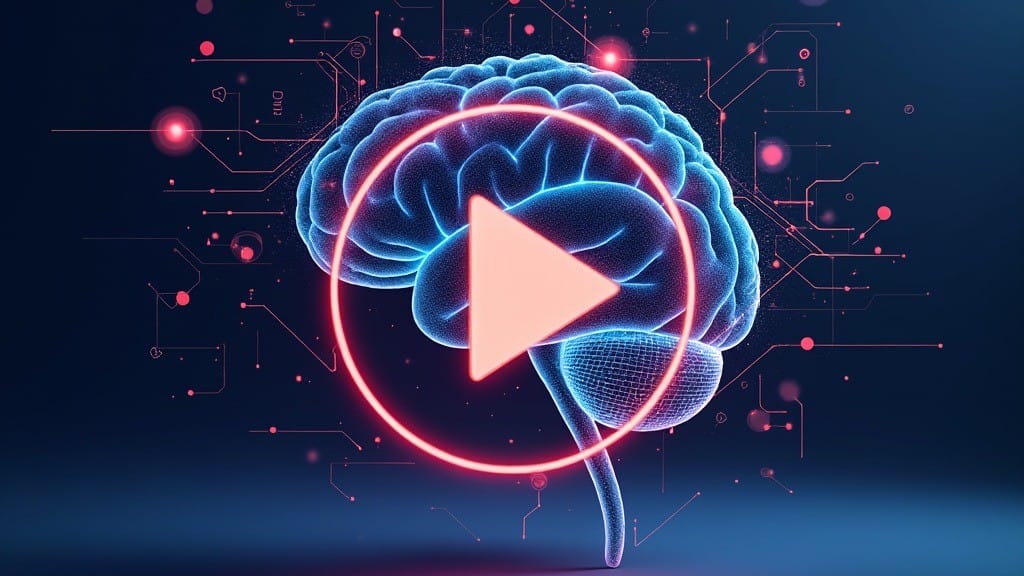In the digital age, video content has become a dominant force in capturing and holding the attention of audiences. However, the effectiveness of a video is not merely a matter of its content or production quality. Understanding the psychological principles that influence how viewers engage with video content is crucial for creators, marketers, and educators alike. This article delves into the science behind video engagement, exploring key psychological factors that determine why certain videos captivate audiences while others fall flat.
Cognitive Load and Video Engagement
At the heart of effective video engagement lies the concept of cognitive load, a theory developed by psychologist John Sweller. Cognitive load refers to the amount of mental effort required to process information. When it comes to video content, the brain prefers simplicity. Overloading viewers with too much information or complex visuals can lead to cognitive overload, where the brain struggles to process the content, resulting in disengagement.
To optimize cognitive load, video creators should focus on clarity and simplicity. This involves using straightforward language, avoiding unnecessary jargon, and ensuring that the pacing of the video allows viewers to absorb information at a comfortable rate. Visuals should be used to complement the narrative, not overwhelm it. By managing cognitive load effectively, videos can hold viewer attention and facilitate better understanding and retention of the content.
Emotional Triggers and Video Engagement
Emotions play a significant role in how viewers engage with video content. Emotional triggers, such as happiness, fear, surprise, or sadness, can enhance viewer engagement by creating a strong emotional connection with the content. When a video evokes an emotional response, it becomes more memorable, and viewers are more likely to share it with others.
The use of emotional storytelling is a powerful tool in video production. For instance, a brand video that tells a heartwarming story of customer success can evoke feelings of happiness and inspiration, leading to a stronger connection between the brand and the viewer. On the other hand, public service announcements (PSAs) that use fear or urgency to convey important information can prompt viewers to take immediate action. Understanding the emotional triggers that resonate with your audience allows you to craft videos that not only engage but also drive meaningful results.
Visual and Auditory Processing
The human brain is wired to process visual and auditory information together, a concept known as dual coding theory. This theory, proposed by Allan Paivio, suggests that people learn and retain information better when it is presented through both visual and auditory channels simultaneously. This is because the brain can process and store information more efficiently when it is presented in multiple forms.
In the context of video content, this means that combining strong visuals with clear audio narration can significantly enhance viewer engagement. For example, an educational video that uses graphics and animations alongside a well-spoken narrator can help viewers better understand and remember complex concepts. Additionally, the use of visual cues, such as arrows or highlights, can direct viewers’ attention to key information, further enhancing comprehension.
Narrative Structures and Storytelling
Storytelling is a fundamental aspect of human communication and has been a powerful tool for conveying information for centuries. In video content, narrative structures play a crucial role in keeping viewers engaged. A well-crafted story with a clear beginning, middle, and end can captivate an audience and make the content more memorable.
Effective storytelling in video content often involves the use of character development, conflict, and resolution. By introducing relatable characters and a compelling narrative arc, viewers are drawn into the story and become emotionally invested in the outcome. For example, a documentary that follows an individual’s journey through adversity to success can resonate deeply with viewers, creating a lasting impact.
Moreover, storytelling helps to organize information in a way that is easy for the brain to process. When content is presented as a story, viewers are more likely to understand and retain the information. This is why videos that employ narrative techniques, such as case studies or customer testimonials, are often more effective at engaging audiences than videos that simply present facts and figures.
Viewer Attention Span
In an era of information overload, capturing and maintaining viewer attention is a significant challenge. Research shows that the average attention span has been decreasing over the years, making it more important than ever for video content to engage viewers quickly and keep them interested throughout.
One of the key factors influencing attention span is the length of the video. While there is no one-size-fits-all answer to the ideal video length, studies suggest that shorter videos are generally more effective at maintaining viewer attention. However, the content and context of the video also play crucial roles. For instance, a tutorial or educational video may warrant a longer duration, provided it is well-structured and delivers value throughout.
Pacing is another critical element in managing viewer attention. Videos that move too slowly can cause viewers to lose interest, while those that move too quickly may overwhelm the audience. Striking the right balance is essential to keeping viewers engaged. Additionally, the first few seconds of a video are particularly important, as this is when viewers decide whether to continue watching. Hooking the audience with a compelling introduction can significantly increase the chances of maintaining their attention throughout the video.
Social Proof and Viewer Behaviour
Social proof is a psychological phenomenon where people are influenced by the actions and opinions of others. In the context of video content, social proof can take the form of likes, shares, comments, and views. When viewers see that a video has garnered a significant amount of social proof, they are more likely to watch it and perceive it as valuable.
The power of social proof lies in its ability to create a sense of trust and credibility. For example, a video with thousands of views and positive comments is more likely to be seen as trustworthy and worth watching. This is why many brands and content creators focus on building social proof as part of their video marketing strategy.
Social proof also influences viewer behaviour in terms of engagement. Viewers are more likely to engage with content that has already been validated by others. This can lead to a positive feedback loop, where high engagement leads to increased visibility, which in turn attracts more viewers and further engagement.
Personalisation and Relevance
Personalisation is a powerful tool for enhancing video engagement. When viewers feel that content is tailored to their specific needs and interests, they are more likely to engage with it. This is why personalised video content, such as targeted ads or recommendations, often performs better than generic content.
Personalization can be achieved through various means, such as using data-driven insights to tailor content to specific audience segments. For instance, a brand might create different versions of a video ad for different demographics, with each version highlighting aspects of the product that are most relevant to that particular group.
Relevance is also key to engagement. Videos that address current trends, timely issues, or specific audience pain points are more likely to resonate with viewers. For example, a video that offers solutions to a common problem faced by a particular industry is likely to attract and engage viewers from that industry. By focusing on personalization and relevance, content creators can increase the likelihood that their videos will capture and hold viewer attention.
The Role of Sound and Music
Sound and music play a critical role in video engagement by influencing emotions, memory, and overall viewer experience. The right soundtrack can enhance the mood of a video, making it more impactful and memorable.
Music, in particular, has a strong emotional pull. A well-chosen piece of music can evoke specific emotions, such as excitement, nostalgia, or calmness, which can enhance the overall message of the video. For example, an upbeat, energetic soundtrack can make a promotional video more exciting and engaging, while a slower, more reflective piece can add emotional depth to a storytelling video.
Sound effects and voiceovers are also important elements of audio design. Clear, well-articulated voiceovers help convey the message effectively, while sound effects can add realism and immersion to the video. Poor audio quality, on the other hand, can detract from the viewer experience and reduce engagement. This is why investing in high-quality audio production is just as important as focusing on visuals.
Call to Action and Behavioural Psychology
The call to action (CTA) is a critical component of any video, guiding viewers on what to do next after watching. Understanding behavioural psychology can help in crafting CTAs that are more effective in driving action.
Principles such as urgency, scarcity, and reciprocity can be leveraged in CTAs to encourage viewers to take immediate action. For example, a CTA that offers a limited-time discount creates a sense of urgency, prompting viewers to act quickly. Similarly, a CTA that highlights a product’s limited availability can tap into the scarcity principle, making the offer more desirable.
Reciprocity, the idea that people feel obliged to return a favor, can also be applied in video content. Offering free, valuable content can create a sense of goodwill, making viewers more likely to respond positively to a CTA. For instance, after providing helpful tips or insights in a video, a CTA inviting viewers to subscribe or make a purchase can feel like a natural next step.
Impact of Video Platform Algorithms
Finally, the role of video platform algorithms in engagement cannot be overlooked. Platforms like YouTube, Facebook, and TikTok use complex algorithms to determine which videos are shown to users. Understanding how these algorithms work can help content creators optimize their videos for better visibility and engagement.
These algorithms typically favour content that generates high levels of engagement, such as likes, shares, comments, and watch time. Videos that perform well in these metrics are more likely to be promoted by the platform, leading to increased exposure and viewership.
Moreover, algorithms often prioritise content that is relevant to the user’s interests and viewing history. This means that creating content that aligns with the preferences of your target audience can increase the likelihood of your video being recommended to potential viewers. By understanding and leveraging platform algorithms, content creators can improve their video’s chances of reaching and engaging a broader audience.
Conclusion
Understanding the science behind video engagement is essential for creating content that captures and holds viewer attention. By applying principles of cognitive load management, emotional triggers, visual and auditory processing, storytelling, and more, content creators





